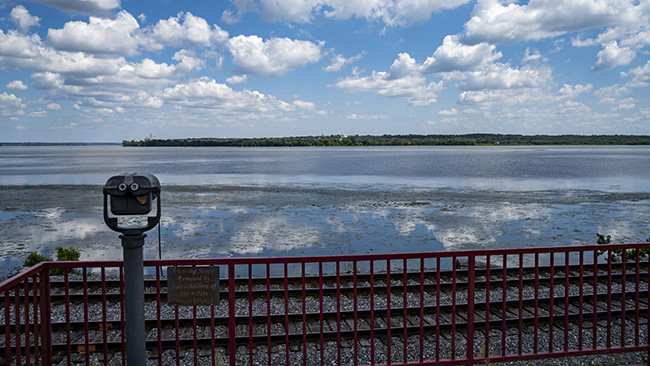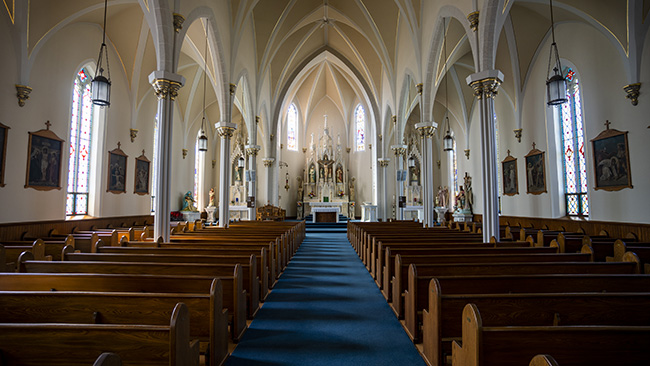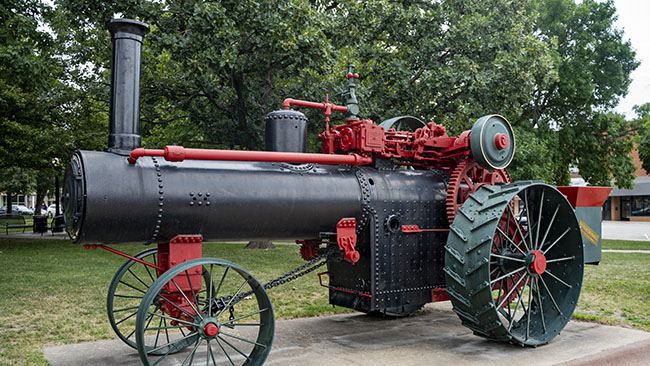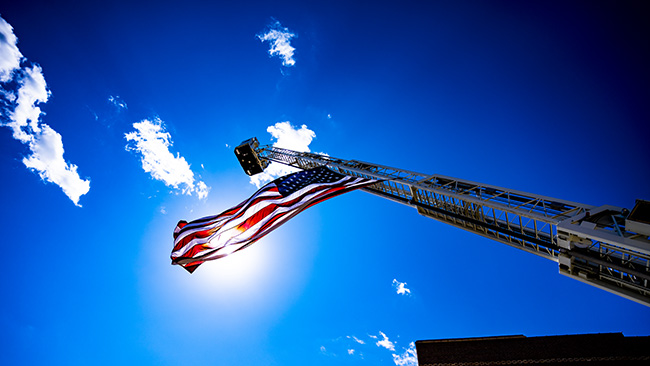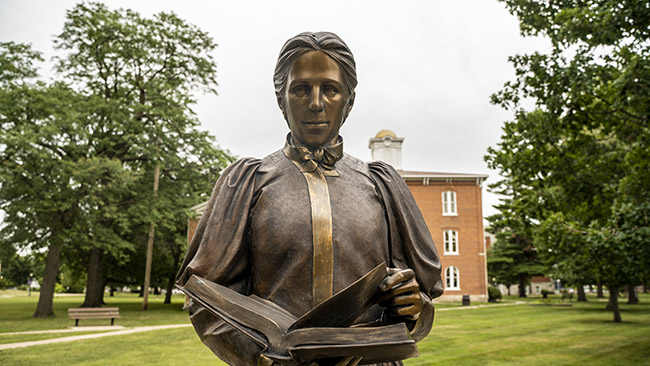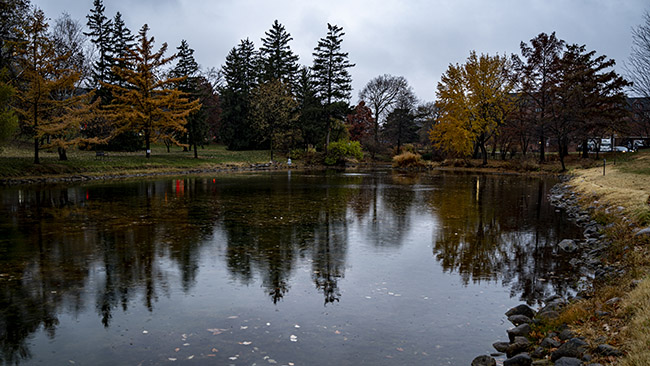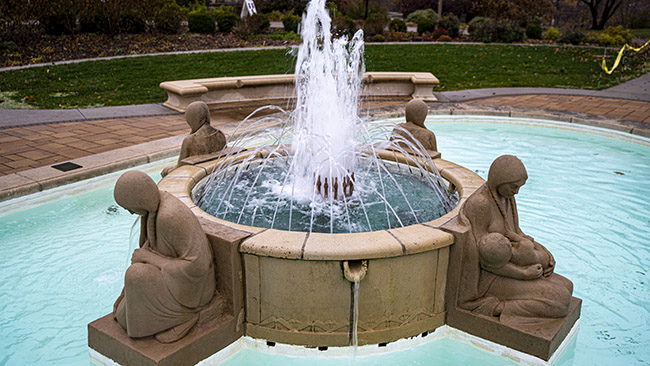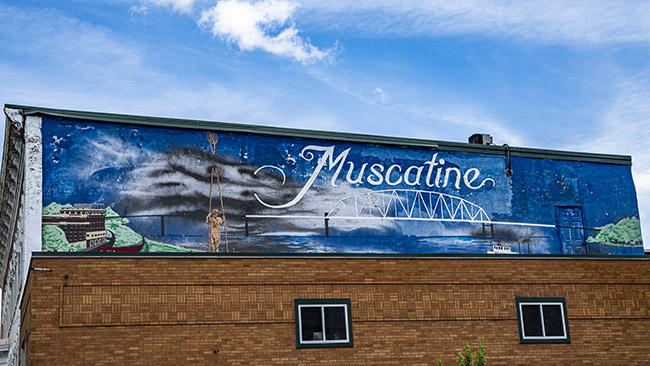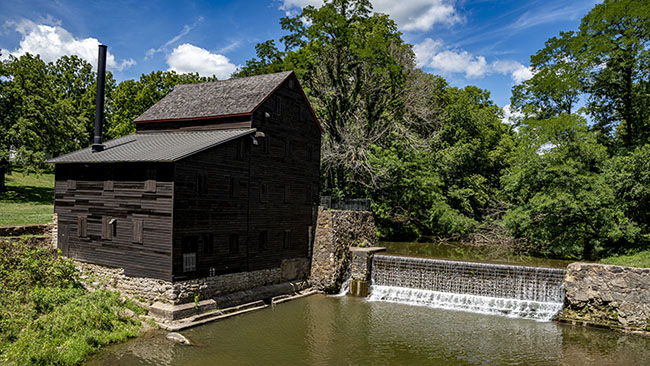Time for another collection of images from my road trip to Lee County and Van Buren County to harvest their town signs. All of these pictures are taken in Lee County.

West Point

West Point has a badass window painter.

So I think this is badass. There are scores of towns across Iowa that has their own mini Statue of Liberty. I’m pretty sure I’ve seen every single one of them. This is the ONLY one that has a base that is a replica of the base that the actual Statue of Liberty sits on. When I sent a picture of it to a bunch of people I didn’t even get a single response. Not a SINGLE person was impressed by this and this makes me sad. Melancholy even.

I like to hit a bakery on these trips if I can.

I bet this place was the bomb in the day!

If you look closely here you can see a giant white building across the Mississippi River. That is a rebuilt LDS Temple in Nauvoo, Illinois. More on that later.
Here is a little history of Nauvoo and the LDS Temple there from the Wiki:
In late 1839, arriving Latter Day Saints bought the small town and in April 1840 it was renamed Nauvoo by Joseph Smith, who led the Latter Day Saints to Nauvoo to escape conflict with the state government in Missouri. The name Nauvoo is derived from the traditional Hebrew language with an anglicized spelling. The word comes from Isaiah 52:7, “How beautiful upon the mountains…” By 1844 “Nauvoo’s population had swollen to 12,000, rivaling the size of Chicago” at the time.
After Joseph Smith’s death in 1844, continued violence from surrounding non-LDS members forced most Latter-Day Saints to leave Nauvoo. Most of these followers, led by Brigham Young, emigrated to the Great Salt Lake Valley. In 1849, Icarians moved to the Nauvoo area to implement a utopian socialist commune based on the ideals of French philosopher Étienne Cabet. The colony had nearly 500 members at its peak, but Cabet’s death in 1856 led some members to leave this parent colony.
The Icarians are the same cult that setup shop in Corning, Iowa. The remains of their cult compound still remain today.
More:
The Latter Day Saints made preparations to build a temple soon after establishing their headquarters at Nauvoo, Illinois, in 1839. On April 6, 1841, the temple’s cornerstone was laid under the direction of Joseph Smith, the church founder and president; Sidney Rigdon gave the principal oration. At its base the building was 128 feet (39 m) long and 88 feet (27 m) wide with a clock tower and weather vane reaching to a total height of 165 feet (50 m)—a 60% increase over the dimensions of the Kirtland Temple. Like Kirtland, the Nauvoo Temple contained two assembly halls, one on the first floor and one on the second, called the lower and upper courts. Both had classrooms and offices in the attic. Unlike Kirtland, the Nauvoo Temple had a full basement which housed a baptismal font. Because the Saints had to abandon Nauvoo, the building was not entirely completed. The basement with its font was finished, as were the first floor assembly hall and the attic. When these parts of the building were completed they were used for performing ordinances (basement and attic) or for worship services (first floor assembly hall).
A Sunstone from the original Nauvoo Temple in a case in front of LDS Church’s Visitor Center in Nauvoo
The Nauvoo Temple was designed in the Greek Revival style by architect William Weeks, under the direction of Joseph Smith. Weeks’s design made use of distinctively Latter Day Saint motifs, including sunstones, moonstones, and starstones. It is often mistakenly thought that these stones represent the three degrees of glory in the Latter Day Saint conception of the afterlife, but the stones appear in the wrong order. Instead, Wandle Mace, foreman for the framework of the Nauvoo Temple, has explained that the design of the temple was meant to be “a representation of the Church, the Bride, the Lamb’s wife”.[4] In this regard, Mace references John’s statement in Revelation 12:1 concerning the “woman clothed with the sun, and the moon under her feet, and upon her head a crown of twelve stars.” This explains why the starstones are at the top of the temple (“crown of twelve stars”), the sunstones in the middle (“clothed with the sun”) and the moonstones at the bottom (“moon under her feet”).Construction was only half complete at the death of Joseph Smith in 1844. After a succession crisis, Brigham Young was sustained as the church’s leader by the majority of Latter Day Saints in Nauvoo. As mob violence increased during the summer of 1845, he encouraged the Latter Day Saints to complete the temple even as they prepared to abandon the city, so portions of it could be used for Latter Day Saint ordinance, such as baptisms for the dead in the basement font. During the winter of 1845–46, the temple began to be used for additional ordinances, including the Nauvoo-era endowment, sealings in marriage, and adoptions. The Nauvoo Temple was in use for less than three months.
Most of the Latter Day Saints left Nauvoo, beginning in February 1846, but a small crew remained to finish the temple’s first floor, so that it could be formally dedicated. Once the first floor was finished with pulpits and benches, the building was finally dedicated in private services on April 30, 1846, and in public services on 1 May. In September 1846 the remaining Latter Day Saints were driven from the city and vigilantes from the neighboring region, including Carthage, Illinois, entered the near-empty city and vandalized the temple.
Initially the church’s agents tried to lease the structure, first to the Catholic Church, and then to private individuals. When this failed, they attempted to sell the temple, asking up to $200,000, but this effort also met with no success. On March 11, 1848, the LDS Church’s agents sold the building to David T. LeBaron, for $5,000. Finally, the New York Home Missionary Society expressed interest in leasing the building as a school, but around midnight on October 8–9, 1848, the temple was set on fire by an unknown arsonist. Nauvoo’s residents attempted to put out the fire, but the temple was gutted. James J. Strang, leader of the Strangite faction of Latter Day Saints, accused Young’s agents of setting fire to the temple. However, Strang’s charges were never proven. On April 2, 1849, LeBaron sold the damaged temple to Étienne Cabet for $2,000. Cabet, whose followers were called Icarians, hoped to establish Nauvoo as a communistic utopia.[5]
From 1937 to 1962, the LDS Church reacquired and restored the lot on which the temple stood.[8] The church bought the portion that initially housed the temple in an uncontested public auction on February 19, 1937, for $900, after previously being listed and protected by the bank at auction several times because prices were lower than expected.[8] Wilford C. Wood then bought the majority of the remainder of the temple square in 1940, 1941, and 1951 and transferred it to Corporation of the Presiding Bishop of the Church of Jesus Christ of Latter Day Saints.[8] The Corporation bought the remainder of the property with purchases in 1959, 1961 and 1962.[8]
In 1999, church president Gordon B. Hinckley announced the rebuilding of the temple on its original footprint. After two years of construction, on June 27, 2002, the church dedicated the Nauvoo Illinois Temple, whose exterior is a replica of the first temple, but whose interior is laid out like a modern LDS temple.
Anyways, I find it fascinating as I like history, religion, and religious history. Mormon history is also fascinating.
There is even more that happened in Nauvoo with Joseph Smith III and the establishment of the Reorganized Church of Jesus Christ of Later Day Saints, which is now called The Community of Christ, but this is probably enough history for today.

